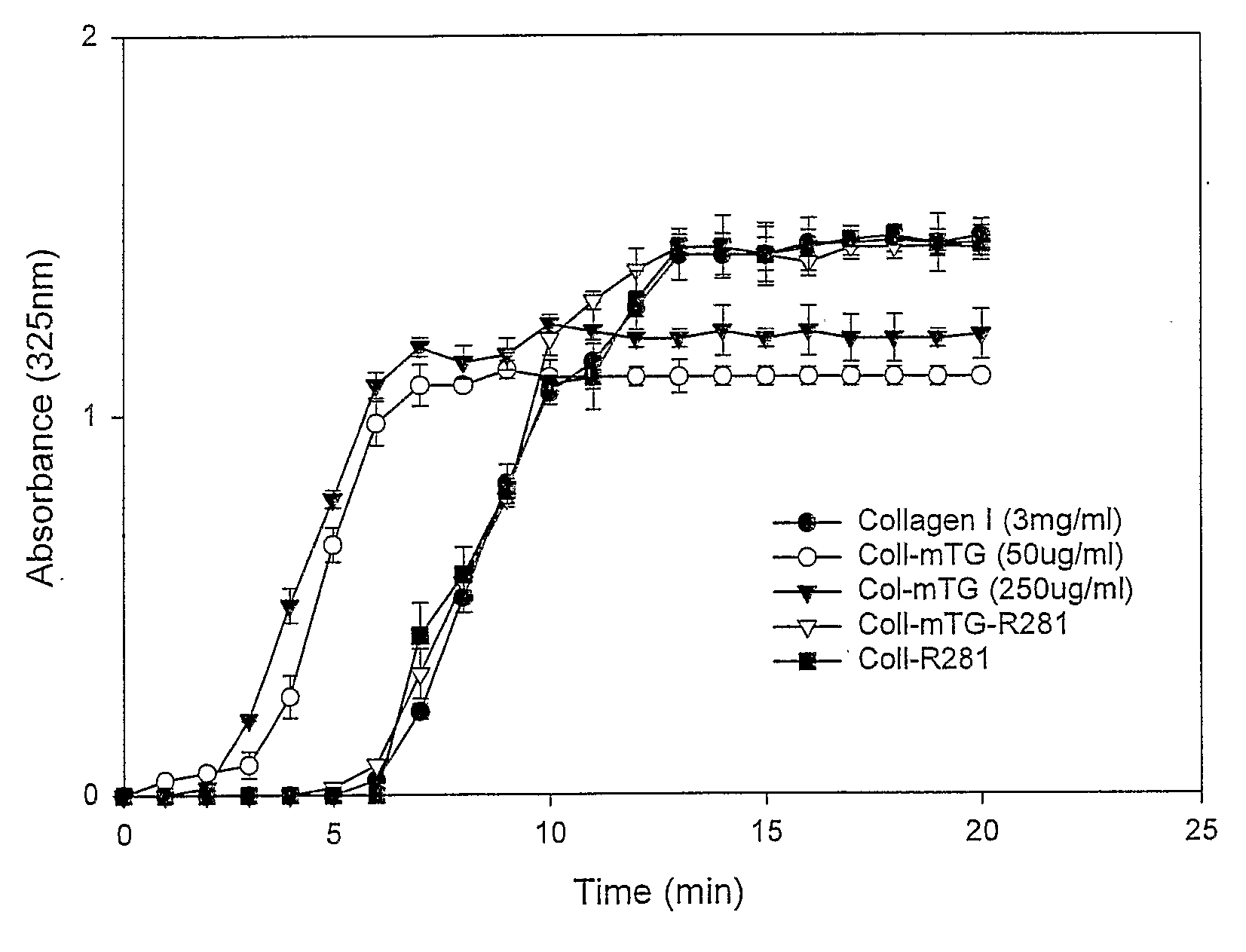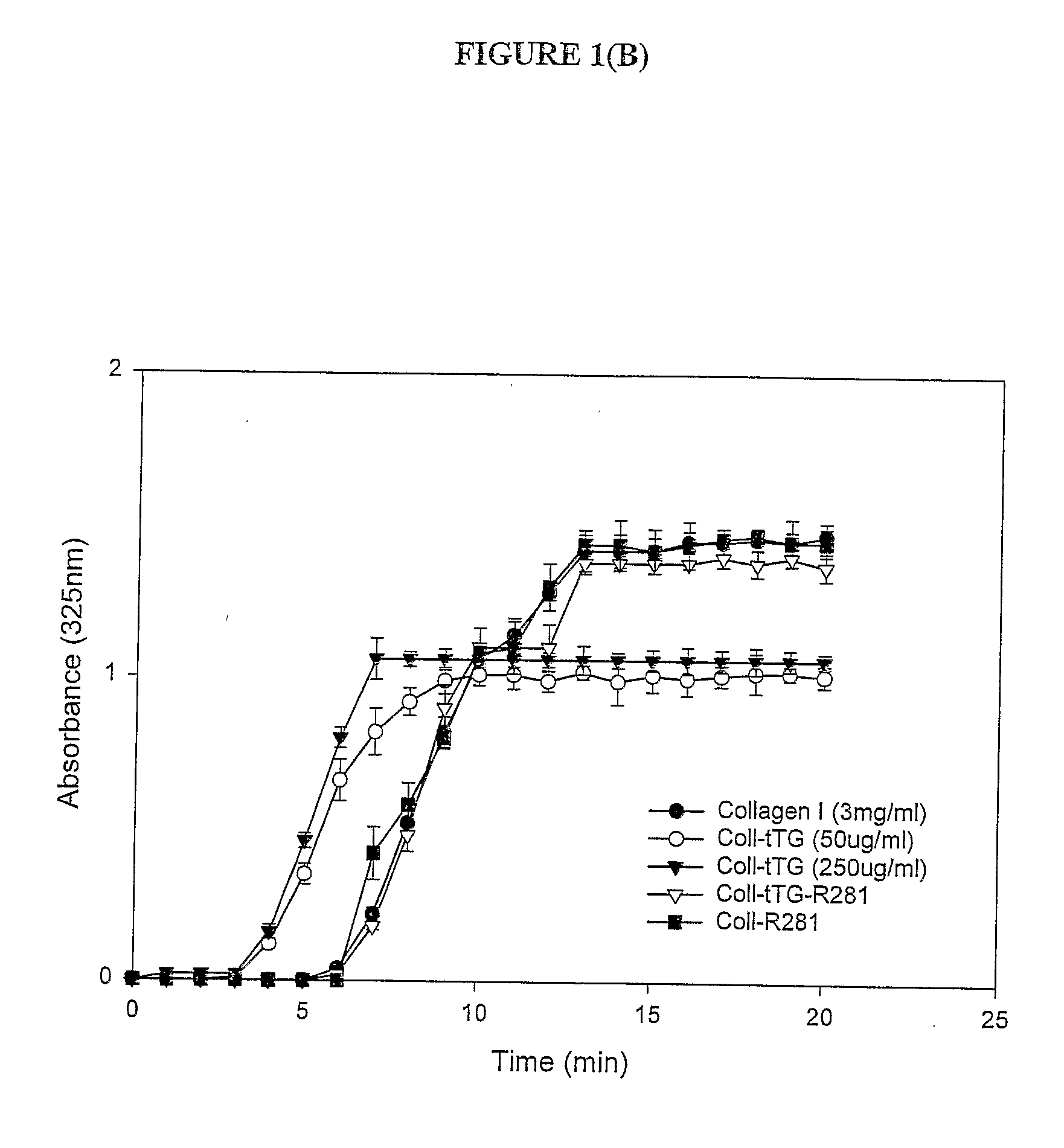Transglutaminase Crosslinked Collagen Biomaterial for Medical Implant Materials
a technology of transglutaminase and collagen, applied in the field of transglutaminase crosslinked collagen biomaterials for medical implants, can solve the problems of unsuitable physical and mechanical characteristics that prevent the use of many applications of bioactive materials, and many materials that have not had their biological activity assessed using in vitro cell culture, etc., to improve the biocompatibility of collagen, cell, and cell attachment. the effect of enhancing the ability to support the attachmen
- Summary
- Abstract
- Description
- Claims
- Application Information
AI Technical Summary
Benefits of technology
Problems solved by technology
Method used
Image
Examples
Embodiment Construction
Methods and Materials
[0085]All water used was de-ionised using an Elgastat System 2 water purifier (ELGA Ltd. UK) and a Milli-Q water purifier (Millipore Waters, UK). All chemicals were purchased from Sigma-Aldrich, Poole, UK, unless otherwise stated. Sterile preparation of stock solutions and chemicals were performed either by filtration through a 0.22 μm Whatmann sterile filter and / or autoclaving at 121° C. at 15 psi for 1 h. Centrifuges and other handling equipment were cleaned with 70% ethanol prior to use.
Cell Culture
[0086]Human osteoblast (HOB) cells, isolated from explants of trabecular bone dissected from femoral heads following orthopaedic surgery, as described by DiSilvio (1995) were kindly supplied by Professor S. Downes and Dr. S. Anderson (School of Biomedical Sciences, University of Nottingham) and used during this investigation. Human foreskin dermal fibroblast (HFDF) cells isolated from human neonatal foreskin (Mr. P. Kotsakis, School of Science, Nottingham Trent Uni...
PUM
| Property | Measurement | Unit |
|---|---|---|
| Concentration | aaaaa | aaaaa |
| Concentration | aaaaa | aaaaa |
| Concentration | aaaaa | aaaaa |
Abstract
Description
Claims
Application Information
 Login to View More
Login to View More - R&D
- Intellectual Property
- Life Sciences
- Materials
- Tech Scout
- Unparalleled Data Quality
- Higher Quality Content
- 60% Fewer Hallucinations
Browse by: Latest US Patents, China's latest patents, Technical Efficacy Thesaurus, Application Domain, Technology Topic, Popular Technical Reports.
© 2025 PatSnap. All rights reserved.Legal|Privacy policy|Modern Slavery Act Transparency Statement|Sitemap|About US| Contact US: help@patsnap.com



